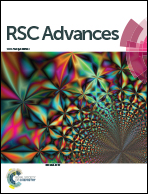An overview of detection techniques for monitoring dioxin-like compounds: latest technique trends and their applications
Abstract
Dioxin-like compounds (DLCs) are considered persistent bioaccumulative toxicants with a number of continuing issues in the fields of ecotoxicology and bioassay. In spite of the great need to monitor these compounds, the only analytical technique with sufficient sensitivity and selectivity for determination of DLCs is a combination of high-resolution gas chromatography and high-resolution mass spectrometry. However, these methods require aseptic techniques, long incubation times, and sophisticated technical expertise for getting accurate results. Nowadays, biological techniques such as biomarkers, bioassays, enzyme immunoassays (EIAs), or other methods have been greatly developed as more sensitive, cost-effective and rapid techniques to determine the presence of DLCs in trace levels of environmental and biological samples. The main aim of this study is to review the latest analytical and bioanalytical detection methods (BDMs) for diagnosis and monitoring of DLCs. Likewise, this work characterizes the latest techniques and trends based on their application, advantages and shortcomings for the various BDMs and their differences are also noted.


 Please wait while we load your content...
Please wait while we load your content...